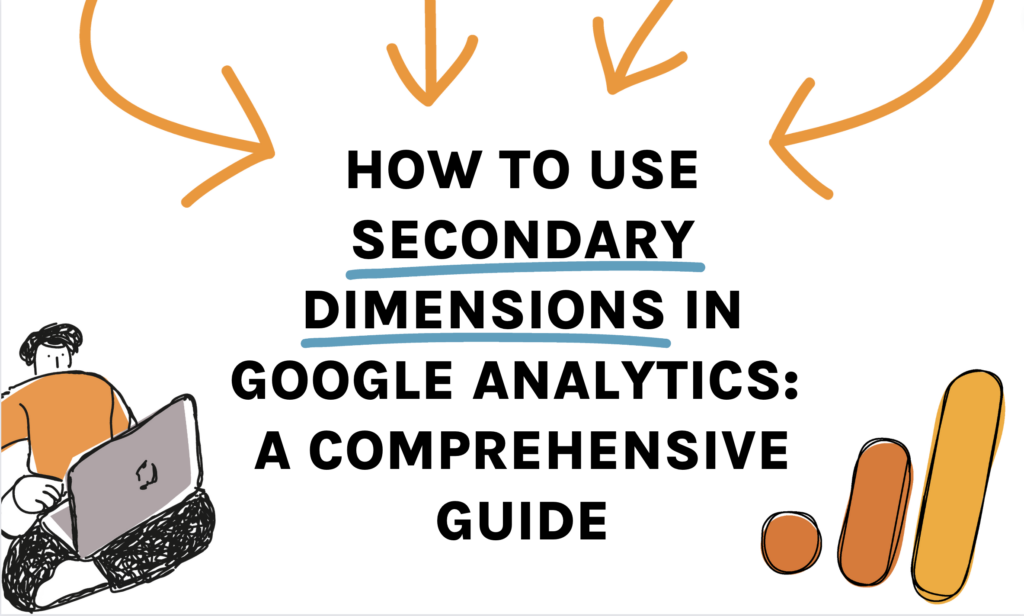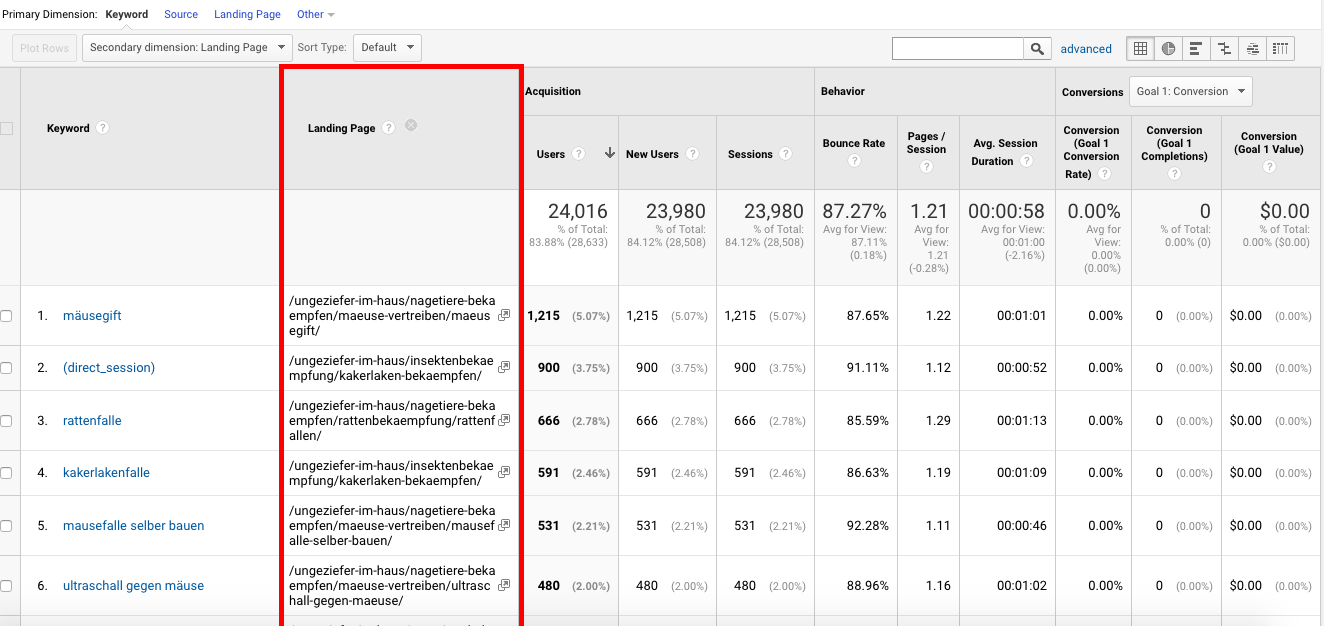The Power of Google Analytics Secondary Dimension: Making Best Use Of Insights
Optimizing Your Digital Method With Additional Dimension Analytics: a Comprehensive Guide
In the realm of digital strategy, the utilization of secondary dimension analytics can offer an extensive understanding of customer actions and web site efficiency. By delving deeper into the layers of information past the key metrics, services can discover useful insights that lead the way for critical decision-making and boosted performance. From deciphering the intricacies of user communications to adjust advertising campaigns, the possibility for leveraging second dimensions is vast. As we browse with the complexities of this comprehensive overview, we are set to unravel the tactics that can change digital strategies and move businesses in the direction of unprecedented success.
Recognizing Additional Measurement Analytics
Understanding Second Dimension Analytics supplies an essential understanding into the sophisticated logical tools used in modern data evaluation practices. These analytics dig much deeper than primary dimensions, supplying a more detailed understanding of information patterns and trends. By integrating second dimensions, analysts can sector and filter information to uncover concealed understandings that may not appear with key analysis alone.
Secondary Measurement Analytics makes it possible for a more granular evaluation of data by presenting added parameters that can be applied to the main measurements - secondary dimension. This strategy enables a more nuanced examination of numerous data points, causing an extra extensive evaluation of intricate datasets
Additionally, Additional Measurement Analytics plays a significant function in improving information visualization techniques. By incorporating second measurements into visual representations, such as charts or graphs, analysts can provide data in a much more informative and detailed manner, making it easier for stakeholders to grasp key insights and make educated decisions based on the data offered.

Applying Second Measurements Successfully
Making use of second measurements tactically improves the depth and accuracy of information evaluation procedures, permitting extra specific understandings and notified decision-making. When executing secondary dimensions properly, it is critical to initial determine the essential metrics that align with your details objectives and goals. By selecting one of the most appropriate secondary measurements, such as demographics, actions, or innovation, you can tailor your evaluation to essence meaningful understandings.
Moreover, organizing and structuring your second dimensions in a logical fashion within your analytics platform can simplify the information interpretation process. secondary dimension. This entails categorizing measurements based on their relationships and relevance to the primary metrics being assessed. Producing custom records or dashboards that integrate these secondary measurements can also assist in a more detailed understanding of user communications and behaviors
Additionally, routinely assessing and changing your second dimensions based upon the advancing requirements of your electronic technique is crucial for maintaining the importance and effectiveness of your data evaluation initiatives. By continuously enhancing the usage of secondary measurements, you can maximize the utility of your analytics devices and drive educated decision-making within your organization.
Analyzing Information for Actionable Insights

To start the procedure of assessing information for actionable understandings, it is essential to establish clear look at these guys purposes and essential performance signs (KPIs) that line up with the company's goals. By defining what success resembles for the details metrics being analyzed, it becomes easier to identify meaningful patterns and trends that can inform decision-making.
Moreover, utilizing tools such as division and contrast evaluation can supply added context to the information, enabling more nuanced insights to be drawn. By damaging down information right into smaller, much more manageable parts, companies can discover concealed chances and areas for improvement that might not appear when considering the information overall.
Optimizing Digital Technique With Findings
Enhancing electronic methods through actionable understandings obtained from data evaluation is vital for accomplishing optimal efficiency in today's affordable landscape. Once beneficial searchings for have been removed from the information, the next action is to take advantage of these insights to maximize digital approaches successfully. One essential facet of this optimization procedure is the identification of fads and patterns that can direct decision-making and source allowance.
By analyzing the information findings, organizations can identify areas of toughness and weakness within their electronic technique. This details can then be made use of to refine advertising and marketing campaigns, boost user experience, and drive total performance enhancement. As an example, if the data discloses a particular market group that is extremely involved with certain sorts of content, services can customize their techniques to far better target and cater to this audience sector.
Moreover, optimizing digital method with searchings for additionally entails continual monitoring and assessment to ensure that the executed adjustments are generating the wanted outcomes. By iteratively refining strategies based on data-driven insights, companies can stay ahead of the competition and adapt to the vibrant electronic landscape properly.
Gauging Success and Iterating
Gauging success in electronic method application includes examining essential performance indicators to gauge the performance of methods and approaches deployed. This assessment is essential in determining the influence of the electronic campaigns on the general company objectives. By tracking metrics such as internet site web traffic, conversion rates, click-through rates, and involvement levels, businesses can assess the efficiency of their digital projects and make data-driven choices for improvement.
As soon as the information has been accumulated and examined, it is important to repeat on the methods based on the understandings acquired. This iterative procedure involves making changes to the digital methods to enhance performance continuously. By identifying what is functioning well and what needs renovation, companies can improve their digital approach to improve outcomes. This cyclical technique of measuring, examining, and iterating is fundamental to making best use of the efficiency of electronic initiatives and making certain that they align with the company's purposes and goals. Eventually, continual monitoring and home refinement are vital to staying competitive in the ever-evolving electronic landscape.
Final Thought
To conclude, including secondary dimension analytics into your digital method can enhance and supply beneficial understandings decision-making. By effectively applying and assessing information, businesses can optimize their digital techniques for success. It is very important to constantly determine success, make needed changes, and repeat on the method to remain affordable in the electronic landscape. Using additional dimension analytics is a powerful tool for making best use of the influence of your digital efforts.
Comprehending Secondary Measurement Analytics supplies a vital insight right into the innovative analytical devices made use of in contemporary information evaluation practices. These analytics dive much deeper than primary measurements, using a more thorough understanding of information patterns and trends. By including additional measurements, experts can segment and filter information to uncover surprise insights that might not be evident with primary evaluation alone.
Utilizing second dimensions purposefully enhances the deepness and accuracy of information analysis procedures, allowing for a lot more precise understandings and informed decision-making.Moreover, organizing and structuring your additional measurements in a rational fashion within your analytics platform can enhance the data interpretation procedure.